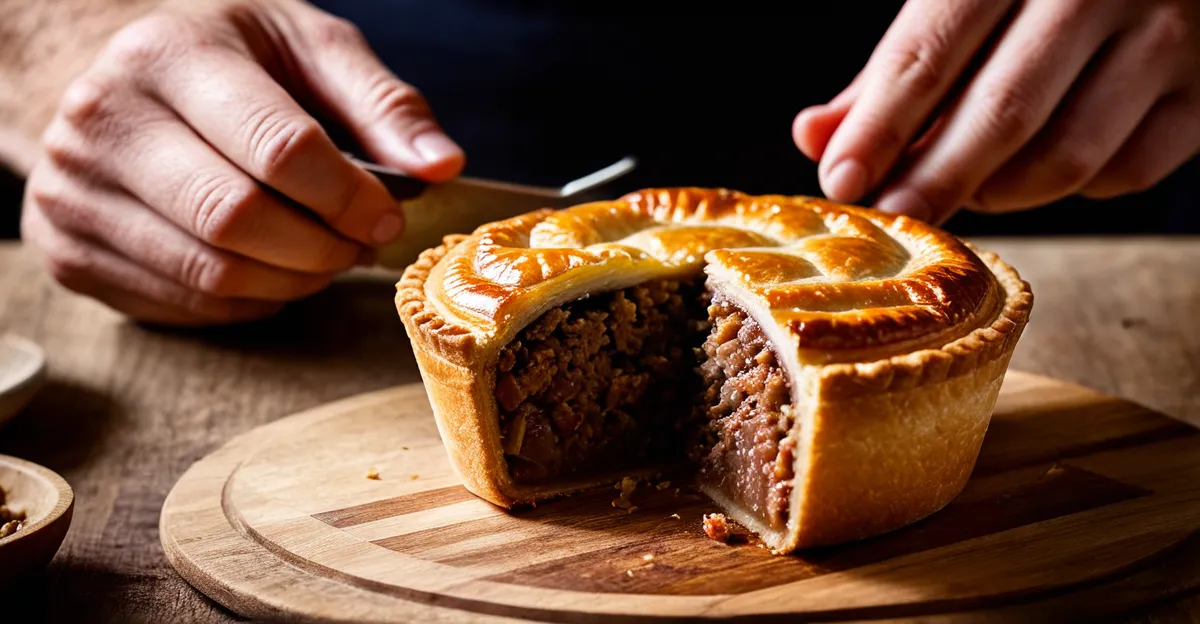Step-by-step guide to making a homemade pork pie with perfect pastry
Creating a homemade pork pie recipe that boasts a perfect crust and flavorful filling hinges on mastering each step from ingredient selection to baking. First, gather essential ingredients: quality pork shoulder or belly, good lard for the pastry, plain flour, salt, pepper, and spices like nutmeg for an authentic taste. Proper equipment includes a mixing bowl, saucepan for hot water crust pastry, rolling pin, and a sturdy pie tin.
Begin by preparing the hot water crust pastry, the cornerstone of any perfect pork pie pastry. Heat water and lard together until melted before swiftly mixing with flour to form a dough. This technique ensures the pastry holds shape well during baking, differentiating it from typical shortcrust. Knead the dough briefly to a pliable consistency but avoid overworking to maintain tenderness.
Also read : How Can British Cuisine Evolve with Modern Trends?
Next, roll out the pastry evenly to line your pie tin, using a slightly thicker base for durability. Incorporate a pastry lid to seal in the filling later. When assembling, pack your seasoned pork pie filling tightly to avoid air pockets and ensure even cooking. Seal edges carefully using a little water or egg wash to bind the lid securely.
Finally, the baking process solidifies your work. Bake at the recommended temperature to develop a golden crust without burning, while the filling cooks through evenly. Mastering this pork pie step-by-step approach results in a deliciously traditional pie with flawless pastry and a rich, juicy interior.
In the same genre : How Can British Cooking Techniques Enhance Modern Dishes?
Mastering hot water crust pastry for pork pies
Mastering hot water crust pastry is key to achieving a perfect pork pie pastry. This pastry differs from typical types due to its toughness and malleability, which holds the pie’s shape well during baking. Begin by heating water and lard until fully melted and just boiling. Pour this hot mixture into the flour carefully and stir quickly; this technique ensures the flour partially cooks, producing a sturdy dough.
Proper pork pie pastry techniques involve kneading the dough enough to combine ingredients evenly but not so much that it becomes tough. Aim for a smooth, pliable texture that can be rolled and shaped without cracking. Over-kneading can lead to a dry, crumbly crust, so balance is crucial.
When rolling the hot water crust pastry, thickness matters. Roll the base thicker than the sides to provide strength. Shape the pastry into the pie tin gently to avoid air bubbles, which can cause weakness or cracks during baking. To prevent common problems like cracking or sogginess, chill the shaped pastry briefly before filling and avoid adding too much moisture inside.
Following these pastry tips ensures your pie has the ideal structural integrity combined with that golden, flaky finish characteristic of a traditional homemade pork pie recipe.
Filling preparation and pie assembly
Crafting the ideal pork pie filling starts with selecting the right cut of pork—typically shoulder or belly—for its balance of meat and fat, which ensures a moist, flavorful center. Seasoning is crucial: a traditional pork pie meat blend includes salt, black pepper, and a pinch of nutmeg or mace to complement the pastry’s richness. Mince the pork finely but avoid over-processing, as texture impacts the pie’s bite.
When assembling your homemade pork pie recipe, pack the pork pie filling firmly into the lined pastry case to eliminate air pockets that cause the filling to shrink and separate during baking. This tight packing also promotes even cooking throughout the pie. Use cold water or egg wash to moisten the pastry edges and press the lid down securely, preventing leaks and maintaining that perfect seal essential in a perfect pork pie pastry.
An effective pork pie step-by-step assembly technique involves layering the meat in stages if desired, pressing each layer firmly. This helps distribute juices evenly and maximizes flavour. Before sealing, consider adding a small disc of gelatin or aspic after baking to fill natural gaps and enhance juiciness. Such traditional assembly methods elevate the taste while preserving the pie’s classic firm structure.
Baking, timing, and troubleshooting pork pies
Baking pork pies to perfection hinges on precise control of both baking pork pies temperature and time. A typical recommendation is to bake at a moderate oven temperature, around 180°C (350°F), to allow the perfect pork pie pastry to brown evenly while ensuring the filling cooks through without drying. Starting with an initial high heat for the first 5–10 minutes helps seal the pie, then lowering the temperature prevents burning the crust while the meat finishes cooking.
Monitoring the pork pie cooking times is critical. Undercooked pastry results in sogginess and structural weakness, while overbaking dries out both pastry and filling. Aim for about 50–60 minutes total baking, though this varies by pie size and oven variations. To check doneness, tap the crust—the sound should be hollow and firm. Also, observe the filling’s texture through the steam emitted; it should be fully set without excessive moisture escaping.
Common pastry troubleshooting issues include cracks, leaks, and soggy bases. Cracking often arises from over-rolled or insufficiently rested pastry. To prevent this, chill the shaped pastry before baking and avoid unnecessary handling. Leaks generally occur when edges are poorly sealed; applying egg wash firmly and crimping the rim strengthens the lid’s hold. Soggy bottoms may stem from excess moisture in the meat or insufficient blind baking. Precooking or draining the pork pie filling can reduce moisture, while blind baking the base briefly before filling helps preserve a crisp crust.
Together, these baking and troubleshooting strategies ensure your homemade pork pie recipe yields the ideal balance of golden, crispy pastry and a juicy, well-cooked filling every time.


